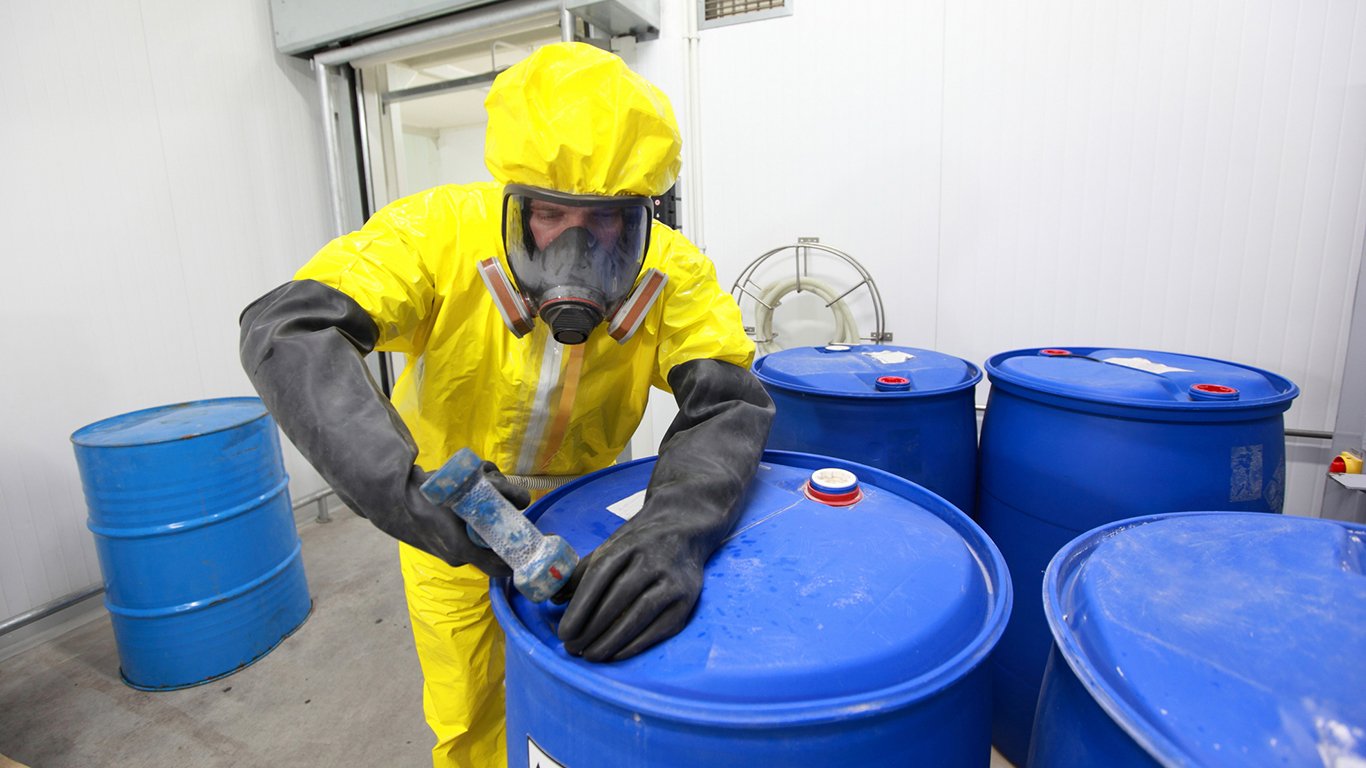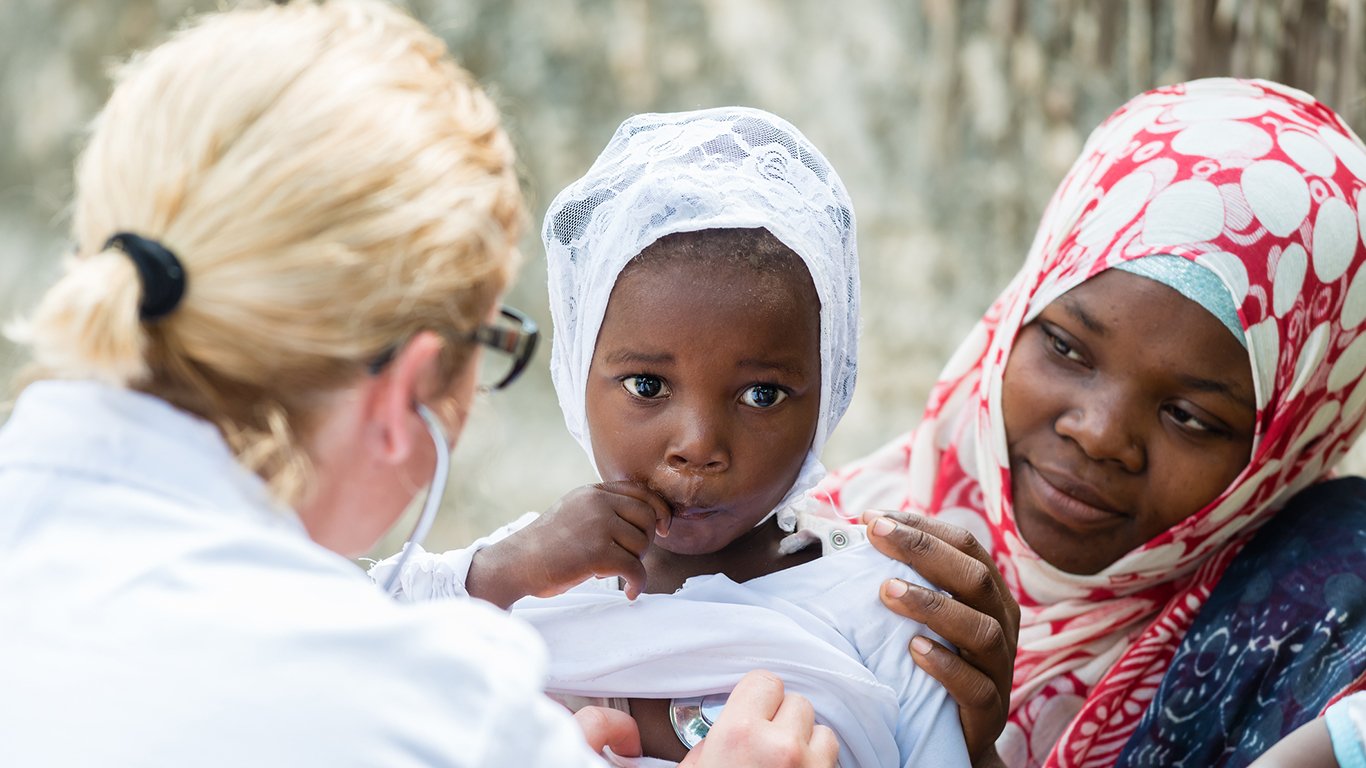Most Surprising Facts About Cancer
October 1, 2018 by Cheyenne BuckinghamThe 2018 Nobel Prize for Medicine was recently awarded to Professors James P. Allison and Tasuku Honjo for developing a cancer treatment method that utilizes the body’s immune system to fight the disease. Discoveries such as this continue to be among the foremost goals of the medical community, because of the global impact of the disease. Cancer is the second leading cause of death in the world — according to the World Health Organization — killing close to 10 million people each year. While extraordinary progress has been made in both the prevention and treatment of cancer, a cure remains elusive.
No place is immune to cancer, and nearly everyone is familiar with the disease in one form or another. We have learned much about cancer, yet there is much more still to learn.
To identify the most surprising facts about cancer, 24/7 Wall St. reviewed recent reports released by the American Cancer Society, National Cancer Institute, Cancer Atlas, and World Health Organization. We opted for generally less well-known facts.
Click here to see the most surprising facts about cancer.
Hundreds of thousands of Americans die each year from cancer. This year, over 600,000 are expected to die, according to the ACS. However, the chances of survival are much greater than they were five decades ago. The five-year survival rate for all cancers rose from 49% in the mid-1970s to 68% in 2010. Between prevention measures, such as screenings and lifestyle habits, and improvement in treatments, more cancer patients can survive the disease.
The results of improved preventive care, including earlier diagnosis and treatment are promising. In 2016, 15.5 million cancer survivors were alive in the United States, and that number is projected to increase to 20.3 million by 2026.
New drugs and therapies, which are the result of research and clinical trials, have provided more effective treatments for patients. The ability to decipher code in the genome may have biologists on the cusp of being able to erase and rewrite problematic code prenatally, so that the child won’t develop the disease in its lifetime.
Researchers are trying to identify how likely a type of cancer is to develop because of genetics, the environment, viruses, or by random chance. Knowing the type and amount of risk of each cancer can help to prevent its onset.

1. Cancer comes in many, many forms
Because cancer can develop in any part of the body, there are that many types of cancer. For example, there is bladder cancer and then there is squamous cell carcinoma of the skin.
Most are familiar with commonly diagnosed cancers such as breast, lung, and prostate. What many may not know is that there are more than 100 different kinds of cancer, many of which the typical American has never heard of. The name of each type of cancer typically includes the organ or tissues where the cancer developed. In some cases, the cancer is named for the type of cell that forms it.
[in-text-ad]

2. Cancer is extremely costly
The total global annual economic cost of cancer in 2010 was estimated at approximately $1.16 trillion worldwide, more than the GDP of countries like Mexico and Turkey. In the United States alone, the estimated expenditures in 2017 were $147.3 billion, according to the National Cancer Institute, which receives several billions of dollars each year from the U.S. Congress.

3. The risk of cancer increases dramatically after 50
Age is the largest risk factor for cancer. According to the NCI Surveillance, Epidemiology, and End Results program, the median age of cancer diagnosis is 66 years. The American Cancer Society reports that 87% of cancer cases in the United States are diagnosed in people 50 years and over.

4. More than one-third of Americans will have cancer in their lifetime
According to the NCI, about 38.4% of men and women in the U.S. will be diagnosed with cancer at some point in their life. The most commonly diagnosed cancers so far in 2018 have been breast, lung and bronchus, prostate, colon and rectum, and melanoma of the skin cancers.
[in-text-ad-2]

5. Cancer is slightly more common among men than women
The 2018 Cancer Facts & Figures report from the ACS estimates that 40 out of 100 men in the United States will develop cancer in their lifetime, compared with 38 out of every 100 women. Individual risk varies greatly due to differences in tobacco exposure and family history and genetic predisposition, among other factors.

6. Cancer will kill over 600,000 Americans this year alone
The ACS estimates that about 1.7 million new cancer cases are expected to be diagnosed in 2018. The ACS also estimates that 609,640 Americans will die from cancer this year. This amounts to about 1,670 deaths every day.
[in-text-ad]

7. Cancer is much more common in the U.S. and Canada than Mexico
According to the ACS’s Cancer Atlas, there is a 31.1% cumulative risk — the total risk that a certain event will happen in a specific time period — of developing cancer by age 75 in the United States. In Canada, the risk is similar at 29.1%. In Mexico, however, it is just 13.4% — less than half the risk in the United States and Canada.

8. Australia has the highest cancer rate in the world
The World Health Organization estimates that 447,000 people will be diagnosed with cancer in 2018. Most of the new cancer cases will occur in Western countries, the country with the highest cancer rate is Australia. In Australia, an estimated 468 people out of every 100,000 people will get cancer. New Zealand has the second highest cancer rate at roughly 438 new cases annually per 100,000 people.

9. Between one-third and one-half of all cancer cases are preventable
Scientists believe cancer is not caused by just one single cause but by the interaction of many factors. Still, there are several factors known to significantly increase the risk of cancer. According to the ACS Cancer Atlas, between one-third and one-half of all cancer cases worldwide are preventable. Lifestyle factors such as smoking regularly, eating a high-fat diet, and working with toxic chemicals are top risk factors. Other factors include obesity, vaccine-preventable infections, and pollution.
[in-text-ad-2]

10. 20% of cancers are linked to infectious disease
Researchers at the Fred Hutchinson Cancer Research Center have discovered that about 1 in 5 cancers globally are attributable to infectious diseases. This is especially the case in Africa, Asia, and South America. Sub-Saharan Africa has the highest proportion of cancers attributable to infectious diseases, such as malaria and HIV, at 31% of cancers. In North America and Australia, the portion of cancers attributable to infections is less than 5%.

11. Two viruses are major causes of cancer
Nearly a quarter of all newly diagnosed cancer cases in low- and middle-income countries in 2012 were the result of infections. Two of the more common infections that lead to cancer are human papillomavirus (HPV) and hepatitis B virus (HBV). HPV can cause cervical and other cancers, and HBV can cause liver cancer. Receiving vaccination against both viruses could prevent an 1 million cancer cases annually worldwide, according to a 2016 study published in Lancet Glob Health.
[in-text-ad]

12. Secondhand smoke kills thousands worldwide every year
Smoking regularly is one of the most direct causes of cancer. Those who quit smoking by middle age are said to decrease their chances of developing lung cancer by more than 60%. Each cigarette contains over 7,000 chemical compounds, 70 of which are known carcinogens, or toxic substances capable of causing cancer. Secondhand smoke is just as problematic, causing an estimated 21,400 deaths from lung cancer worldwide each year.

13. Smoking causes more than 16 different types of cancer
While many people associate smoking with lung cancer, tobacco smoke is known to cause cancer in the kidneys, pancreas, the stomach, and other organs as well. According to the NCI, smoking cigarettes, as well as any exposure to tobacco smoke, is attributable to nearly 480,000 prematures deaths in the United States each year.

14. Breast cancer is highly hereditary
Women who have an immediate family member, such as a mother, sister, or even a daughter, with a history of breast cancer are at much greater risk — about twice as likely as a woman without such history. Between 5% to 10% of breast cancer cases are considered to be hereditary, caused by an inherited mutation in mainly two genes, BRCA1 or BRCA2.
[in-text-ad-2]

15. Breast cancer is more common in the left breast than the right
For reasons yet unknown, epidemiologists have found that the left breast is more likely to be the carrier of breast cancer than the right. The left breast is 5% to 10% more likely to develop cancer than the right. The left side of the body is also 10% more likely to develop melanoma than the right side. Though breast cancer is not exclusive to women, women are 100 times more likely to get it than men.

16. Chemotherapy may not be more effective for a majority of women with breast cancer
In a recent trial supported by the NCI called TAILORx, 70% of women with the most common type of breast cancer showed no benefit from chemotherapy. In the trial, women with a specific hormone receptor who met other conditions received treatment after surgery. Those who received both chemotherapy and hormone therapy did not benefit more than those who received only hormone therapy.
In a press release, Dr. Joseph Sparano, associate director for clinical research at the Albert Einstein Cancer Center and Montefiore Health System in New York City, said the data will enable clinicians to recommend more personalized treatment plans to their patients.
[in-text-ad]

17. 15,000+ children in the U.S. were diagnosed with cancer in 2017
Cancer cases among children account for less than 1% of total cancer cases in high-income countries compared with 4% in low-income countries. There are several known causes of childhood cancer, including radiation, contracted viruses, and genetic makeup. Over half of children with cancer in the world have one of three cancers: leukemia, lymphoma, and brain tumors. Last year, an estimated 15,270 children (19 years and younger) in the United States were diagnosed with cancer. Nearly 1,800 kids died last year of the disease.

18. The first known description of cancer is over 3,000 years old
The first description of cancer can be found in the Edwin Smith Papyrus, one of the oldest Egyptian medical textbooks, dating back to around 1,500 B.C. One section of the text describes eight different cases of ulcers and tumors in the breast that were removed by cauterization with a tool called the fire drill. The papyrus states, “There is no treatment.”

19. Naked mole rats may be immune to cancer
The naked mole rat appears to be immune to cancer. This subterranean rodent native to East Africa is resistant to cancer in part because of a substance called hyaluronan that accumulates between its tissues. The rodent acquires a molecularly denser form of hyaluronan than humans and mice. Hyaluronan also likely stops the growth of cancer — when it was removed in a study, the rodent developed tumors.
Other research shows the naked mole rat is able to build proteins through a process called protein transcription with minimal errors. Researchers believe the accuracy in transcription may contribute to its long life span and could play a role in its immunity to cancer.
[in-text-ad-2]

20. The last major environmental carcinogen was discovered in the 1980s
In the 1980’s, scientists determined tobacco was a carcinogen — a substance capable of causing cancer. That discovery, roughly four decades ago, was the last time a major human carcinogen was discovered.

21. The annual number of cancer cases worldwide is on the rise
In 2012, 14.1 million people across the globe had cancer. That number is projected to increase
to about 23.6 million by 2030 as a result of population growth and increased aging. The number of cancer cases may be on rise, but so is the survival rate. The share of people who died from cancer dropped by 25% from 1990 to 2014.
[in-text-ad]

22. The cancer death rate in U.S. dropped by 26% from 1991 to 2015
Deaths from cancer rose throughout the 20th century, primarily due to the tobacco epidemic. In 1991, 215 out of 100,000 people died from cancer in the U.S. In 2015, the cancer death rate declined significantly to 159 per 100,000 people, likely due to a declining smoking rate along with improvements in early detection and treatment.

23. Cancer survival is increasing
In 2015, 1 in 6 global deaths were attributed to cancer — or 8.8 million people. However, many also survive the disease. In the same year, there were 15.5 million cancer survivors in the United States alone, according to the NCI. The number of survivors a year is expected to increase to 20.3 million by 2026. Change in lifestyle habits, early detection, and better treatment have all improved the chances of survival.
Sponsored: Find a Qualified Financial Advisor
Finding a qualified financial advisor doesn’t have to be hard. SmartAsset’s free tool matches you with up to 3 fiduciary financial advisors in your area in 5 minutes. Each advisor has been vetted by SmartAsset and is held to a fiduciary standard to act in your best interests. If you’re ready to be matched with local advisors that can help you achieve your financial goals, get started now.
 24/7 Wall St.
24/7 Wall St.